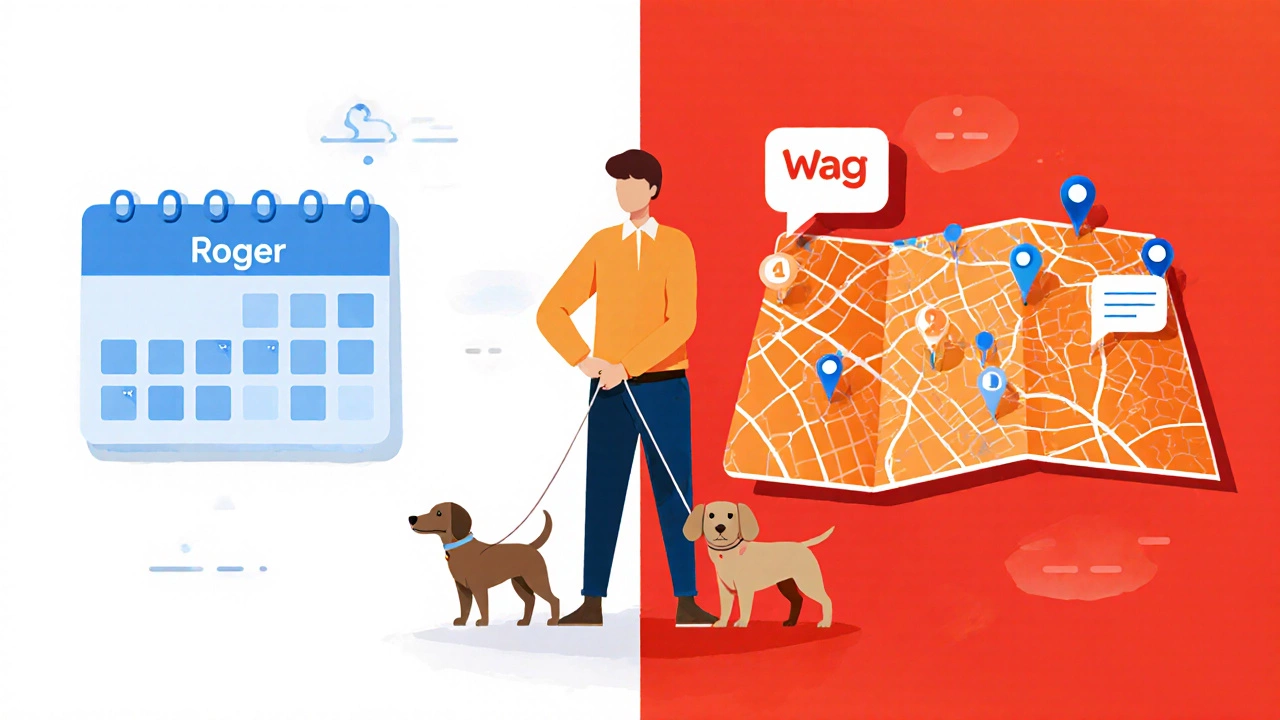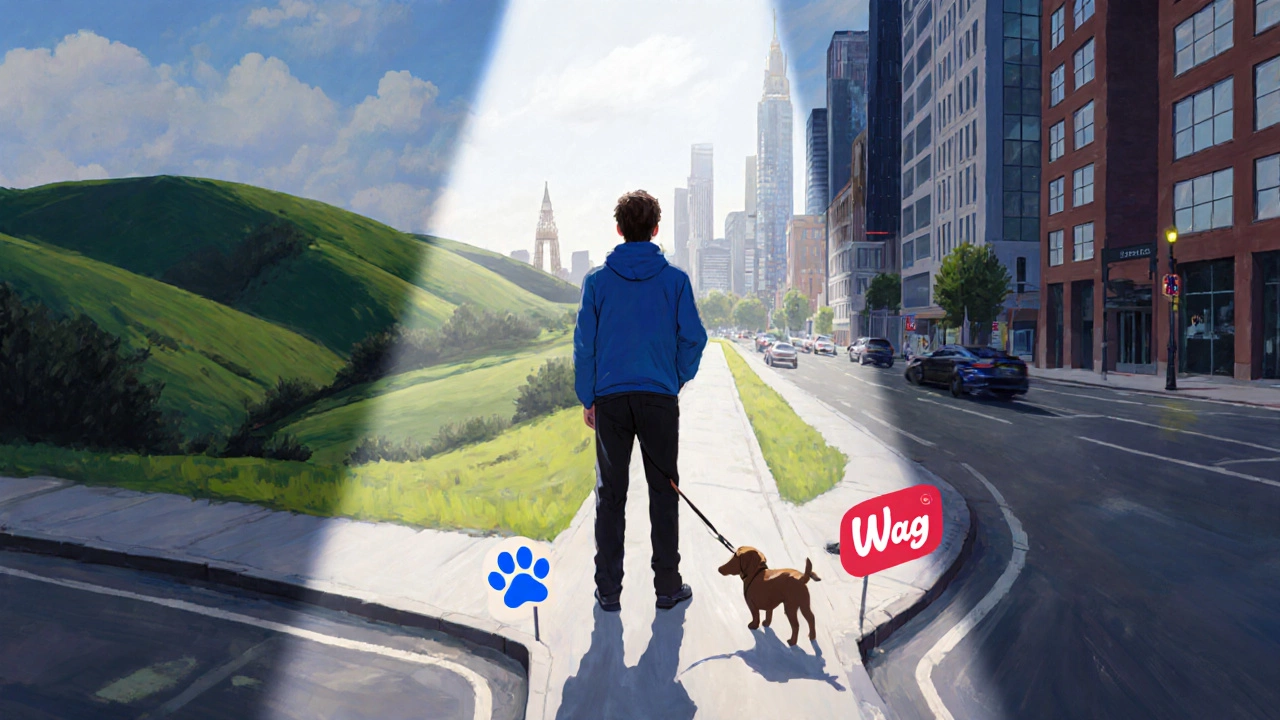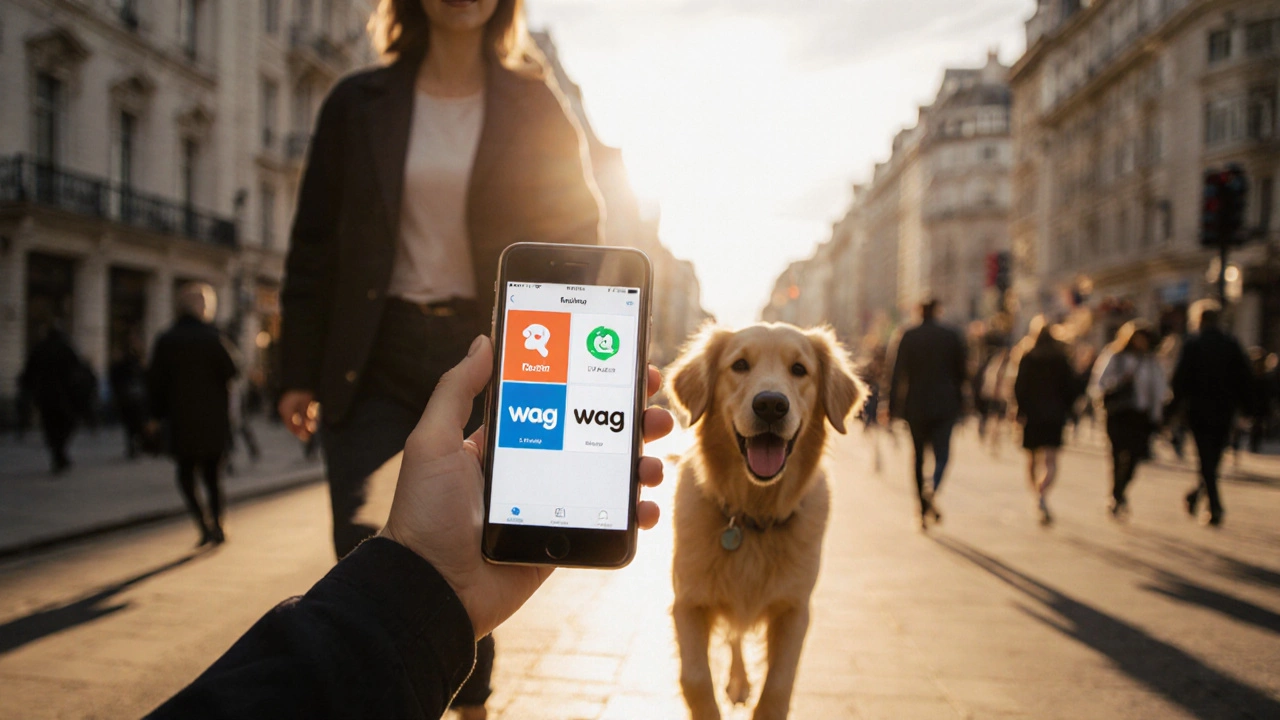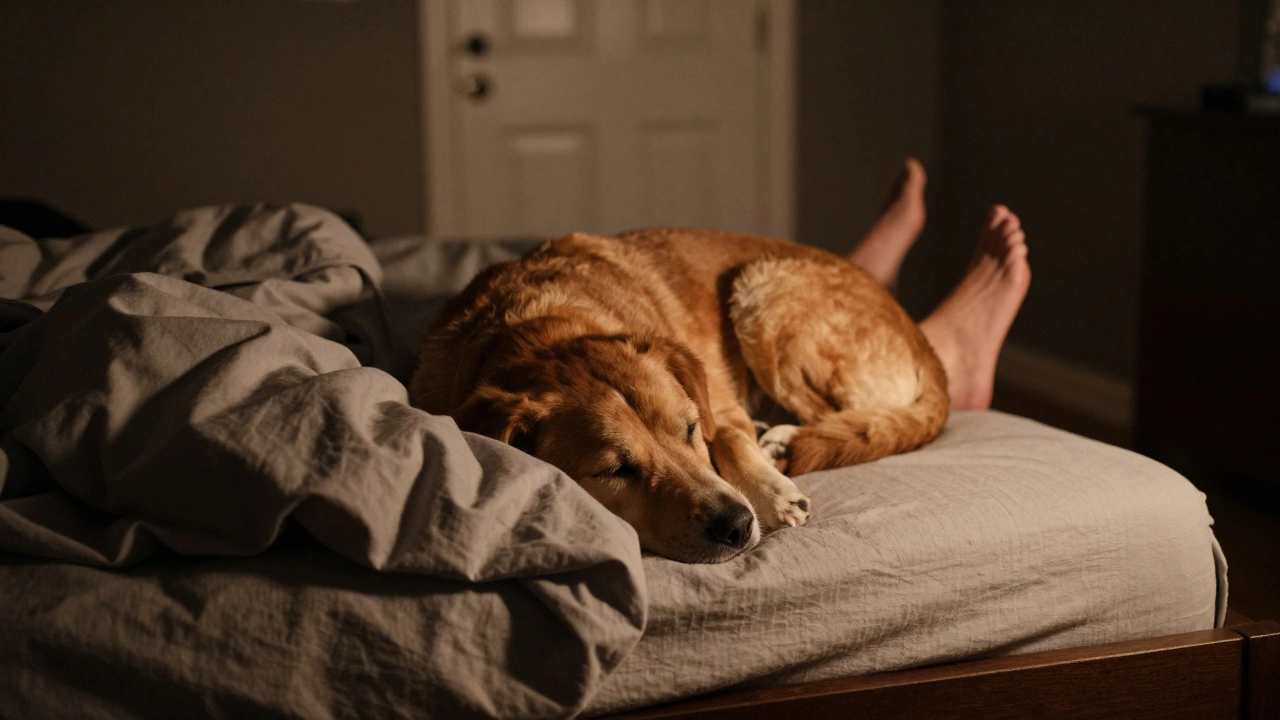Rover vs Wag: Gig Platform Comparison Tool
Rover
- Commission: 20% (drops to 15% after 30 jobs)
- Geographic Reach: 30+ countries
- Insurance: $1M liability (auto-activated)
- Scheduling: Advance booking up to 2 weeks
- Support: Dedicated manager after 10 jobs
- App Features: GPS tracking, photo updates, expense log
- Avg Earnings: $20-$30 per walk
Wag
- Commission: 25% (drops to 18% after 50 walks with 4.9★)
- Geographic Reach: U.S. only (urban focus)
- Insurance: $500k liability (opt-in)
- Scheduling: On-demand, minutes-to-hours
- Support: Email, 48-hour response
- App Features: Live Map, instant push alerts
- Avg Earnings: $18-$28 per walk
Decision Factors
Recommended Platform
Choosing the right gig platform can shape your whole experience as a dog walker or pet sitter. Two names dominate the market: Rover - a global pet‑care marketplace launched in 2011 - and Wag, the U.S.‑centric app that went live in 2015. Both promise flexible hours, decent pay, and a ready‑made client base, but they differ in fees, safety measures, and earning potential. Below we break down the core factors you’ll weigh when deciding which platform fits your lifestyle.
Pay Structure and Commission Fees
Understanding how you get paid is the first job‑to‑be‑done. Both Rover and Wag take a cut of each booking, but the percentages and payout schedules vary.
- Rover: Takes 20% for most services (dog walking, pet sitting, drop‑ins). High‑volume sitters can negotiate down to 15% after completing 30 jobs.
- Wag: Charges a flat 25% commission on walks and 20% on sits. The rate drops to 18% for walkers who maintain a 4.9‑star rating over 50 walks.
Both platforms pay weekly via direct deposit, but Rover also offers an instant‑pay option for a $1.99 fee per transaction, which can help when cash flow is tight.
Flexibility and Scheduling
Flexibility is the headline reason many pet‑care pros join gig platforms. Here’s how the two compare:
- Rover lets you set your own availability calendar months in advance. Clients can book up to two weeks ahead, giving you a predictable pipeline.
- Wag focuses on on‑demand walks, often filling slots within hours. This can mean higher earnings during peak times but also more last‑minute cancellations.
If you prefer a steady schedule, Rover’s booking model usually provides fewer surprises. If you thrive on spontaneous gigs and can handle a fluctuating calendar, Wag’s rapid‑match system may suit you better.

Safety, Insurance, and Support
Both platforms claim to protect their walkers, but the details matter.
- Background Checks: Rover runs a third‑party criminal and DMV check before you can list services. Wag does the same but adds a “Trusted Walker” verification that includes a live video interview.
- Insurance: Rover offers a $1million liability policy that activates automatically for every booked job. Wag provides a $500,000 policy, but you must opt‑in during the onboarding process.
- Support Channels: Rover’s in‑app chat connects you to a dedicated account manager after you reach 10 completed jobs. Wag primarily relies on email support, with response times averaging 48hours.
For walkers who value robust, automatically‑applied coverage, Rover edges ahead. Those who don’t mind a little extra paperwork for a slightly lower premium may still be comfortable with Wag.
Client Base and Reputation
Where you get your gigs depends on the platform’s user pool and how it matches you with pet owners.
- Rover: Operates in 30+ countries, with a strong foothold in the UK, Canada, and Australia. Average rating for walkers is 4.8 stars, and the platform highlights “trusted sitters” on search results.
- Wag: Concentrated in the United States, particularly urban centers like New York, Los‑Angeles, and Chicago. Walkers often receive a “Wag Star” badge after 100 walks and a 4.9+ rating.
If you live outside the U.S., Rover provides a broader pool of nearby clients. In the U.S., Wag’s dense urban network can translate into more walk requests per day.
Technology and App Experience
Both companies invest heavily in mobile tech, but the user experience differs.
- Rover App: Clean interface, integrated GPS route tracking, and automatic photo updates for owners. The app also includes a built‑in expense tracker for tax purposes.
- Wag App: Focuses on rapid matching, with a “Live Map” that shows nearby walk requests in real time. The app sends push notifications for each new job, which can be both an advantage and a distraction.
Rover’s richer feature set may appeal to walkers who like documentation and record‑keeping. Wag’s streamlined, speed‑oriented UI is geared toward high‑volume walkers who thrive on quick turn‑arounds.

Overall Cost‑Benefit Summary
Below is a snapshot comparison to help you decide which platform aligns with your goals.
| Factor | Rover | Wag |
|---|---|---|
| Commission | 20% (down to 15% after 30 jobs) | 25% (down to 18% after 50 walks with 4.9★) |
| Geographic Reach | 30+ countries (strong UK presence) | U.S. only (urban focus) |
| Insurance | $1M liability (auto‑activated) | $500k liability (opt‑in) |
| Scheduling | Advance booking up to 2 weeks | On‑demand, minutes‑to‑hours |
| Support | Dedicated manager after 10 jobs | Email, 48‑hour response |
| App Features | GPS tracking, photo updates, expense log | Live Map, instant push alerts |
| Average Earnings (US$) | $20‑$30 per walk | $18‑$28 per walk |
Making Your Decision
Ask yourself these quick questions:
- Do I need a platform that works in the UK? Rover wins.
- Am I comfortable handling last‑minute cancellations? Wag thrives on that model.
- Is a higher liability coverage a deal‑breaker? Choose Rover.
- Do I want a built‑in expense tracker for tax season? Rover provides it.
- Can I maintain a 4.9★ rating easily? If yes, Wag’s lower commission after 50 walks could boost net earnings.
For many walkers, the safest bet is to sign up for both platforms, treat them as complementary income streams, and then pivot toward the one that delivers the most consistent, profitable gigs in your area.
Frequently Asked Questions
Which platform pays higher per walk?
Rover typically offers $20‑$30 per walk, while Wag ranges from $18‑$28. Exact figures depend on location, time of day, and any promotions the platform runs.
Do I need separate insurance for each platform?
Both Rover and Wag provide liability coverage automatically when you accept a job, so you don’t need separate policies. However, you can purchase supplemental insurance if you want higher limits or coverage for personal belongings.
Can I work for both Rover and Wag at the same time?
Yes. Most walkers sign up for both to maximize job volume. Just keep each platform’s schedule straight to avoid double‑booking.
How do the rating systems affect my earnings?
Higher ratings unlock lower commission tiers on both platforms. Rover lowers its fee after 30 jobs, while Wag drops to 18% after you hit a 4.9★ rating on 50 walks.
Is there a minimum age requirement?
Both platforms require walkers to be at least 18 years old and have a valid government‑issued ID for the background check.






